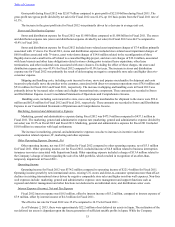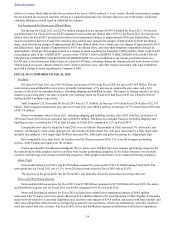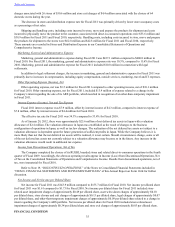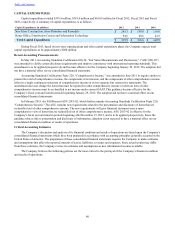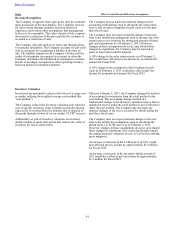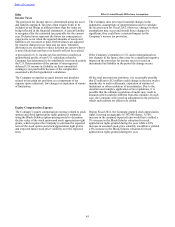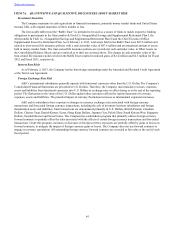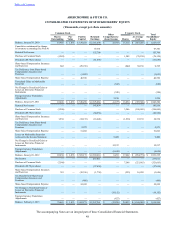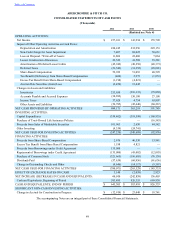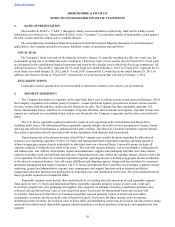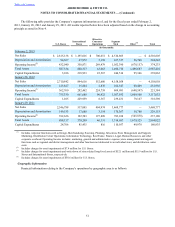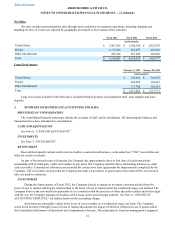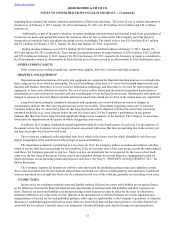Abercrombie & Fitch 2013 Annual Report Download - page 43
Download and view the complete annual report
Please find page 43 of the 2013 Abercrombie & Fitch annual report below. You can navigate through the pages in the report by either clicking on the pages listed below, or by using the keyword search tool below to find specific information within the annual report.
43
Policy Effect if Actual Results Differ from Assumptions
Income Taxes
The provision for income taxes is determined using the asset
and liability approach. Tax laws often require items to be
included in tax filings at different times than the items are
being reflected in the financial statements. A current liability
is recognized for the estimated taxes payable for the current
year. Deferred taxes represent the future tax consequences
expected to occur when the reported amounts of assets and
liabilities are recovered or paid. Deferred taxes are adjusted
for enacted changes in tax rates and tax laws. Valuation
allowances are recorded to reduce deferred tax assets when it
is more likely than not that a tax benefit will not be realized.
A provision for U.S. income tax has not been recorded on
undistributed profits of non-U.S. subsidiaries that the
Company has determined to be indefinitely reinvested outside
the U.S. Determination of the amount of unrecognized
deferred U.S. income tax liability on these unremitted
earnings is not practicable because of the complexities
associated with this hypothetical calculation.
The Company recognizes accrued interest and penalties
related to uncertain tax positions as a component of tax
expense upon settlement, law changes or expiration of statute
of limitations.
The Company does not expect material changes in the
judgments, assumptions or interpretations used to calculate
the tax provision for Fiscal 2012. However, changes in these
assumptions may occur and should those changes be
significant, they could have a material impact on the
Company’s income tax provision.
If the Company’s intention or U.S. and/or international tax
law changes in the future, there may be a significant negative
impact on the provision for income taxes to record an
incremental tax liability in the period the change occurs.
Of the total uncertain tax positions, it is reasonably possible
that $7 million to $12 million could change in the next twelve
months due to audit settlements, expiration of statutes of
limitations or other resolution of uncertainties. Due to the
uncertain and complex application of tax regulations, it is
possible that the ultimate resolution of audits may result in
amounts which could be different from this estimate. In such
case, the Company will record an adjustment in the period in
which such matters are effectively settled.
Equity Compensation Expense
The Company’s equity compensation expense related to stock
options and stock appreciation rights granted is estimated
using the Black-Scholes option-pricing model to determine
the fair value of the stock option and stock appreciation right
grants, which requires the Company to estimate the expected
term of the stock option and stock appreciation right grants
and expected future stock price volatility over the expected
term.
During Fiscal 2012, the Company granted stock appreciation
rights covering an aggregate of 363,800 shares. A 10%
increase in the assumed expected term would have yielded a
3% increase in the Black-Scholes valuation for stock
appreciation rights granted during the year, while a 10%
increase in assumed stock price volatility would have yielded
a 6% increase in the Black-Scholes valuation for stock
appreciation rights granted during the year.
Table of Contents


